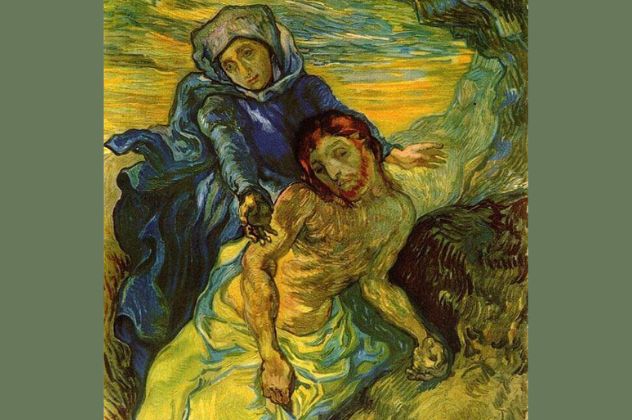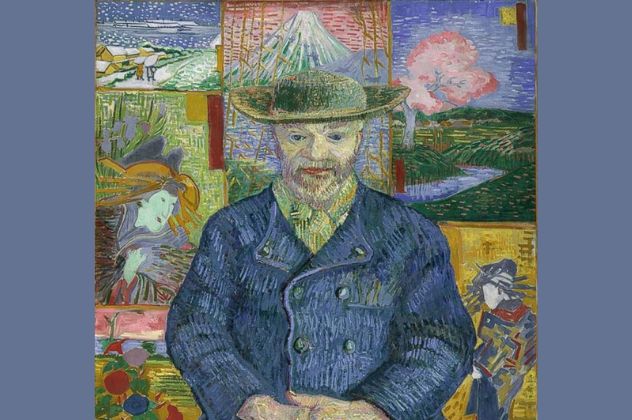 Animals
Animals  Animals
Animals  Weird Stuff
Weird Stuff 10 Weird Things People Used to Do at New Year’s
 Our World
Our World 10 Archaeological Discoveries of 2025 That Refined History
 Weird Stuff
Weird Stuff 10 Fascinating Facts You Might Not Know About Snow
 Miscellaneous
Miscellaneous Top 10 Things Crypto Was Supposed to Change & What Actually Did
 History
History 10 Huge Historical Events That Happened on Christmas Eve
 Music
Music 10 Surprising Origin Stories of Your Favorite Holiday Songs
 History
History 10 Less Than Jolly Events That Occurred on December 25
 Weird Stuff
Weird Stuff 10 Funny Ways That Researchers Overthink Christmas
 Politics
Politics 10 Political Scandals That Sent Crowds Into the Streets
 Animals
Animals 10 Species That Refused to Go Extinct
 Weird Stuff
Weird Stuff 10 Weird Things People Used to Do at New Year’s
 Our World
Our World 10 Archaeological Discoveries of 2025 That Refined History
Who's Behind Listverse?

Jamie Frater
Head Editor
Jamie founded Listverse due to an insatiable desire to share fascinating, obscure, and bizarre facts. He has been a guest speaker on numerous national radio and television stations and is a five time published author.
More About Us Weird Stuff
Weird Stuff 10 Fascinating Facts You Might Not Know About Snow
 Miscellaneous
Miscellaneous Top 10 Things Crypto Was Supposed to Change & What Actually Did
 History
History 10 Huge Historical Events That Happened on Christmas Eve
 Music
Music 10 Surprising Origin Stories of Your Favorite Holiday Songs
 History
History 10 Less Than Jolly Events That Occurred on December 25
 Weird Stuff
Weird Stuff 10 Funny Ways That Researchers Overthink Christmas
 Politics
Politics 10 Political Scandals That Sent Crowds Into the Streets
Top 10 Facts about the Life and Death of Vincent Van Gogh
Renowned for being the most iconic post-impressionist artist, leaving behind an ineffaceable mark in the world of fine arts, Vincent Van Gogh is a name most people will be aware of. Despite being considered a failure in his lifetime, now, more than a century later, his masterpieces have revolutionized how modern-day art is presented and perceived. In addition, he has proven to be an inspiration for several current budding artists.
As little as we know about his personal life, it is well known he suffered from degenerative mental disorders, which not only made his paintings a deception of his mental health but also made his lifetime highly controversial, some details being quite shocking.
Related: 10 Fascinating Old-Timey Art Trends
10 Becoming an Artist Was Not His Initial Plan

Van Gogh’s father was a Protestant pastor, and his son hoped to follow in his footsteps. He studied theology in a church and was later deployed as a missionary in a small unknown village in the southwest of Belgium that went by the name “Borinage.” Owing to his highly romanticized idea of divinity and deeper truth of what Christianity truly was, he believed in a greater higher power, which was contrary to what his father’s church believed in. He was a strong believer in the idea that the generation of religion starts in the lower class. That’s why he began preaching in the village of poor miners.
Van Gogh, seeing the state of the poor villagers, gave away all his possessions to them and tried to imitate the morals of Christ to catch the attention of the people. An inspector from the Evangelization Council saw his radicalism, and his behavior was reported to the church authorities, who had him removed just two years into his religious duties. So he decided to follow his artistic passion, and his work was often seen depicting religious symbology.[1]
9 The Letters
Van Gogh was a highly private person when it came to his personal life, and little to nothing would have been known about his life if it weren’t for his letters, the only authentic remaining personal record of his lifetime. They are a window into his universe. Vincent’s biggest supporter was his brother, Theo. Since Van Gogh turned toward art and writing after being sacked from his duties as a missionary, he would write to his brother in hopes of seeking clarity from his deteriorating mental health and lack of employment. The letters also showed how strained his family ties had grown due to his inability to pursue a proper career path.
With over 2,000 letters and around 240 sketches in them, they included everything from his deepest secrets to his intimate life. Around 950 of the letters were published in 1914 as a book.[2]
8 Inspired by the East

Van Gogh sought inspiration from many artists and culturally affected pieces of artwork, taking a deep liking toward Asian art. At first, he paid no heed to the growing trend of Japanese art, but he decided to modernize his work after seeing its increasing impact. When he moved to Paris to share an apartment with his brother, they both worked on making a collection of Japanese prints, and Vincent’s interest in this form of art only chose to grow.
He started developing a keen eye toward Oriental art pieces, recognizing them as masterpieces equally great to western ones. The only real record stating how big this collection of prints was can be found in one of his letters, where he referred to them as “hundreds.”[3]
7 Unrequited Love

The idea of having a mysterious artistic partner is compelling to many. Still, despite being a master in his artistic skill, Van Gogh was quite problematic and unlucky when it came to his romantic life, having experienced as much as only one proper romantic relationship through the course of his short lifespan. It is known he proposed to three women early in his life—for the sake of financial stability—and was turned down every time.
First, he had a highly volatile relationship with a neighbor. They planned to get married, but she drank poison when her family showed resentment toward her decision.
In 1882, he rescued a pregnant prostitute, who went by the name of Sien Hoornik, and her daughter. They moved into his studio apartment with him. They struck up a romantic relationship that Van Gogh’s family was highly against. Their romance only lasted 18 months, after which Vincent moved to Paris alone. In Paris, he fell in love with an Italian restaurant owner, Agostina Segatori, but this relationship proved challenging, and things ended a short time later.[4]
6 Plagued by Many Illness
One of the main reasons for Van Gogh’s problematic life and instability was due to the numerous health disorders he was experiencing, most of which were mental health disorders, that ran in his family. More than a century since his demise, the mystery of his mental health is yet to be unraveled. But it was not until the age of 30 that his mental health took a dramatic turn downhill.
The downward spiral of his mental health is narrated in the letters he exchanged with his brother, Theo. Taking a closer look at the symptoms mentioned in these letters and in the authorized record at the Saint-Rémy asylum (where he was admitted), he experienced seizures, anxiety, insomnia, and hallucinations. He was conjectured to suffer from a bipolar mood disorder, schizophrenia, epilepsy, repetitive self-mutilation (tactlessly referred to as”Van Gogh” syndrome), and alcohol withdrawal.[5]
5 Debated Details of the Fate of His Left Ear
One of the most infamous details of Van Gogh’s life has to be the incident of him cutting off his ear, but the details of this incident have been highly exaggerated. In 1888, he rented a house in Arles in hopes of finding an artist community and being less of a burden on his brother. One of his good friends and fellow artist, Paul Gauguin, moved in with him, where they collaborated on their work.
They lived and worked together for two months, but the tension seemed to build between them, and in a fit, Van Gogh pulled a knife on Gauguin. Rather than inflicting any injuries on Gauguin, he cut off only the lobe of his left ear, not the whole ear. Though debate still rages about exactly how much of the appendage was removed—anywhere between the lobe, the lobe plus a bit of the outside edge, and the entire ear. It is said he gifted the remains of his ear to a prostitute in a brothel nearby and was hospitalized for days to come.[6]
4 Starry Night
Being one of the most eminent and striking pieces of art, you will be surprised to learn that the legendary Starry Night was painted in a small room in the Saint-Paul-de Mausoléo asylum. Van Gogh voluntarily entered the asylum after having several manic episodes and realizing depression had started taking a toll on him. He was given a separate small studio where he was allowed to paint.
The window of the studio overlooked a small village, and he was captivated by how big the stars seemed through his window. He then proceeded to create an oil-on-canvas painting of the scenery. Despite its compelling nature, Van Gogh had an extreme disliking of this painting of his, labeling it a failure.[7]
3 Mostly Painted Landscapes Due to Lack of Models
If you take a look at a portfolio of Vincent Van Gogh’s work, it will become apparent that most of his pieces of art are landscapes, with very few exceptions for family and friends. This was not mainly by choice; he was unable to get models for his portraits because, firstly, he lived in a state of poverty for most of his life and, hence was unable to afford models. Secondly, he started showing signs of extreme aggression and hysteria due to his declining mental health. This caused the people of his city to consider him a public menace and avoid him. Thus, no one ever volunteered to be his model, and considering he was branded a “failing artist” in his era, no one was commissioning him to make portraits for them either.
He has a vast collection of self-portraits, with a few exceptions including Dr.Gachet, the postman Joseph Roulin, and a few prostitutes he encountered in Paris.[8]
2 Near to No Artwork Sold during His Lifetime
Vincent van Gogh was the quintessential starving artist of his day. Because his work was considered “ugly” at that time and age, he was only able to sell only a handful of paintings and a few drawings in 10 years. Most of these were commissioned or purchased by friends or family. However, he apparently traded many more paintings with other artists or patrons for food or painting supplies, so much more of his work was available during his lifetime. Van Gogh, unfortunately, didn’t reap the monetary benefits that his paintings now bring. But the conventionally proclaimed theory is that he could only sell one painting for a long time until he painted The Red Vineyard in 1888.
Van Gogh was invited to a group show in Brussels, and he sent six paintings to be exhibited with the group. One of these paintings was The Red Vineyard. Anna Boch, an artist herself, a collector of pieces of art, and the sister of one of Van Gogh’s close friends, bought the painting for 400 francs because she wanted to motivate Van Gogh and please her brother.[9]
1 Suicide
The reason why Van Gogh died is well known, but the details of it have been somewhat erroneous. Van Gogh had been visiting a field near Auvers that he had been painting for a while. One day, he traveled there and tried to commit suicide by shooting himself. While it is often thought he died there, he did not hit any vital organs, so the death was not instantaneous. Instead, he went back to the inn he was staying at.
Unfortunately, the bullet was lodged so deep inside him that the doctors couldn’t remove it. This caused an infection to develop. And two days after shooting himself in the abdomen, he died on July 29, 1890, with his brother Theo beside him.
However, this account has received some pushback, and some proclaim that he was accidentally—maybe intentionally—shot by a couple of young teenagers while in the field. In order to protect the boys, Van Gogh claimed that he had done it himself, which is what his brother and the doctor who saw him afterward believed. Unfortunately, the truth might never be known.[10]

![Top 10 Dark Facts About The Death Penalty [DISTURBING] Top 10 Dark Facts About The Death Penalty [DISTURBING]](https://listverse.com/wp-content/uploads/2020/06/deathpenalty-150x150.jpg)






